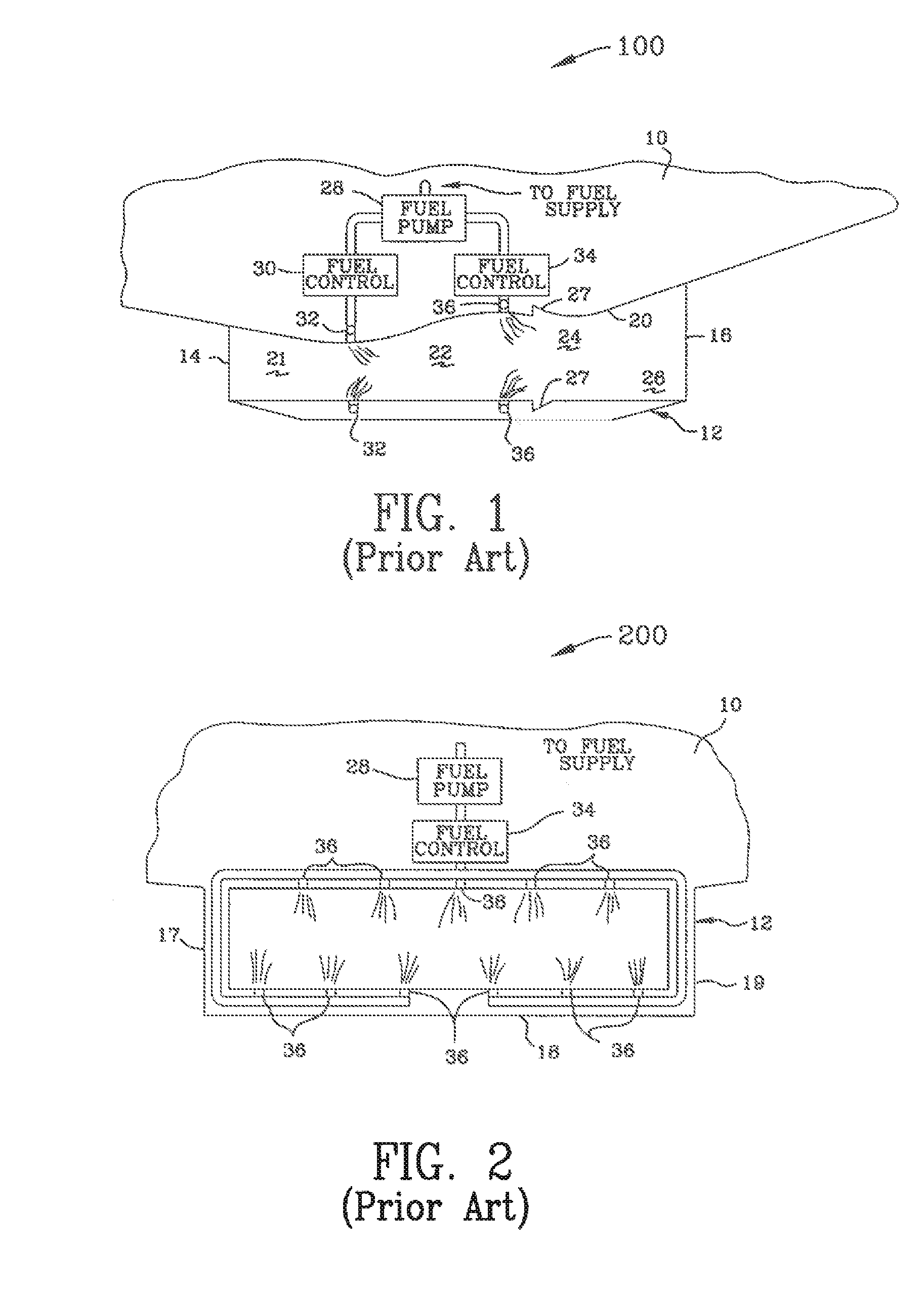Dual-Mode Combustor
a combustor and dual-mode technology, applied in mechanical equipment, transportation and packaging, lighting and heating equipment, etc., can solve the problems of high thrust-to-weight ratio of rocket thrusters, high temperature and thrust limitations of turbine engines, and inefficient specific impulse efficiency, etc., to achieve the effect of low flight mach number
- Summary
- Abstract
- Description
- Claims
- Application Information
AI Technical Summary
Benefits of technology
Problems solved by technology
Method used
Image
Examples
Embodiment Construction
[0090]In the design of the dual-mode combustor all processes were assumed adiabatic. Air capture, inlet contraction ratio, and total pressure recovery were specified as a function of flight Mach number illustrated in FIG. 12A. These characteristics are representative of a single-cone, axi-symmetric inlet design with forebody pre-compression. Air was assumed to be a mixture of nitrogen and oxygen at 78.85% and 21.15% by volume, respectively.
[0091]In the analysis of all ramjet cases, ethylene fuel entered at sonic velocity, normal to the propulsion axis at 5180 R. The energy required to raise the ethylene fuel to this condition was ignored. Constant-area combustion in a cross-sectional area equal to 83.3% of the inlet capture area was assumed. This area was chosen to allow operation at a minimum flight Mach number of 2.5 without thermal choking. For comparison, calculations were also done assuming a thermally-choked combustion process. For these cases, the diffuser exit Mach number wa...
PUM
 Login to View More
Login to View More Abstract
Description
Claims
Application Information
 Login to View More
Login to View More - R&D
- Intellectual Property
- Life Sciences
- Materials
- Tech Scout
- Unparalleled Data Quality
- Higher Quality Content
- 60% Fewer Hallucinations
Browse by: Latest US Patents, China's latest patents, Technical Efficacy Thesaurus, Application Domain, Technology Topic, Popular Technical Reports.
© 2025 PatSnap. All rights reserved.Legal|Privacy policy|Modern Slavery Act Transparency Statement|Sitemap|About US| Contact US: help@patsnap.com



